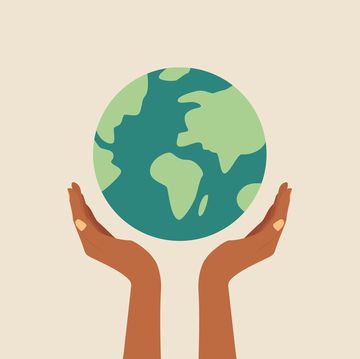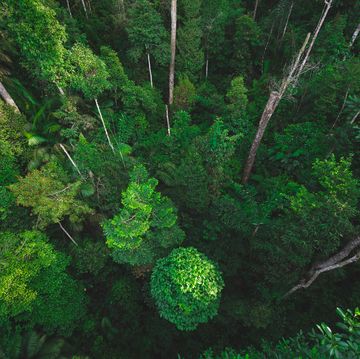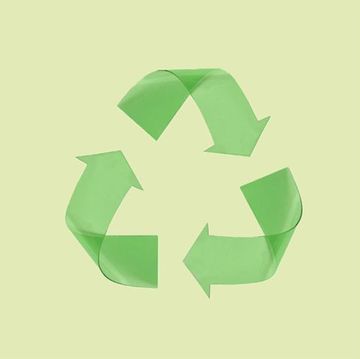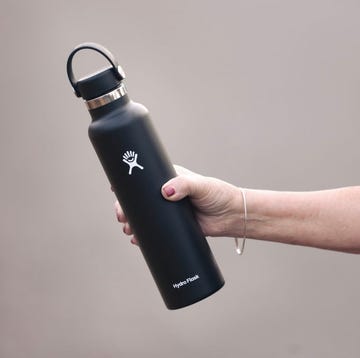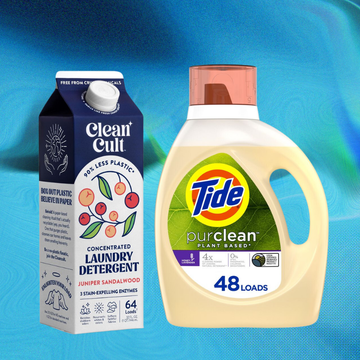1Stellar Sea Lion
 Andrea Nicola Luzio / EyeEm//Getty Images
Andrea Nicola Luzio / EyeEm//Getty ImagesWhile the Eastern U.S. population of Stellar Sea Lions have been growing steadily (yay!), the Western U.S. population has taken a dip over the years. Because boat strikes and pollution are big factors for this decline, critical habitat and protective zones have been set up for these sea lions.
RELATED: 50 Stunning Animals From Our National Parks
2Giant Panda
 Dong Wenjie//Getty Images
Dong Wenjie//Getty Images Advertisement - Continue Reading Below
3Eastern Lowland Gorilla
 guenterguni//Getty Images
guenterguni//Getty ImagesResearchers have estimated that the number of lowland gorillas has decreased 50% since the 1990s, but political unrest in the Democratic Republic of Congo, which has created an environment ripe for poachers, makes the exact numbers hard to track.
4Green Turtle
 Copyright Michael Gerber//Getty Images
Copyright Michael Gerber//Getty Images Advertisement - Continue Reading Below
5Bonobos
 Chris Chaney//Getty Images
Chris Chaney//Getty ImagesHumans actually share 98.7% of their DNA with this primate found in the Democratic Republic of Congo (DRC). Like the Eastern Lowland Gorilla, civil unrest and poaching have been a threat to this species.
6North Atlantic Right Whale
 by wildestanimal//Getty Images
by wildestanimal//Getty ImagesMany species of whales have suffered from the effects of climate change and human exploitation, but the Right Whale sadly may have suffered the most. There are only about 400 of these whales remaining due to commercial whaling, entanglement in fishing gear, and the degradation of their habitat.
RELATED: The 50 Cutest Native Animals in Every State
Advertisement - Continue Reading Below
7Chimpanzee
 Thimas Shing / EyeEm//Getty Images
Thimas Shing / EyeEm//Getty ImagesNative to the forests and savannahs of Africa, these highly resourceful apes are known for their advanced social rituals and use of tools to help them eat. Unfortunately, endangered chimpanzees are illegal hunted for their meat, which is considered a delicacy in parts of Central Africa.
8Kordofan and Nubian Giraffes
 Grant Ordelheide / Aurora Photos//Getty Images
Grant Ordelheide / Aurora Photos//Getty ImagesTwo subspecies of giraffe have been added to the International Union for Conservation of Nature list of critically endangered animals. Native to Africa, the Kordofan and Nubian giraffes are dying out because of habitat loss and poaching.
RELATED: 30 Tiny Changes You Can Make to Save the Earth
Advertisement - Continue Reading Below
9Black-Footed Ferret
 Getty Images
Getty Images These furry critters are the most endangered mammals in North America, according the World Wildlife Fund, with around 300 left across the continent. Their existence is threatened by disease and loss of habitat.
10Red Panda
 Getty Images
Getty ImagesThere are only around 10,000 adult red pandas in the wild due to poaching and loss of habitat. Conservation efforts have included making red panda hunting illegal in certain areas, but their low birth rate makes the process a slow one.
Advertisement - Continue Reading Below
11Tapir
 Getty Images
Getty ImagesFour of the five species of tapir that exist in areas of South America, Central America, and Southeastern Asia are either endangered or vulnerable because of poaching and the destruction of their habitats. Tapirs also have a slower reproductive rate, which has made conservation efforts a bit of a challenge. They carry one baby at a time and pregnancies last 13 or 14 months.
12Peruvian Black Spider Monkey
 Getty Images
Getty ImagesHabitat destruction and being hunted for the Amazonian meat trade caused this species to be added to the endangered lists in 2014. Their population has been cut in half over the past 45 years. In recent years, their status has been updated to "vulnerable" rather than "endangered."
Advertisement - Continue Reading Below
13Galápagos Penguin
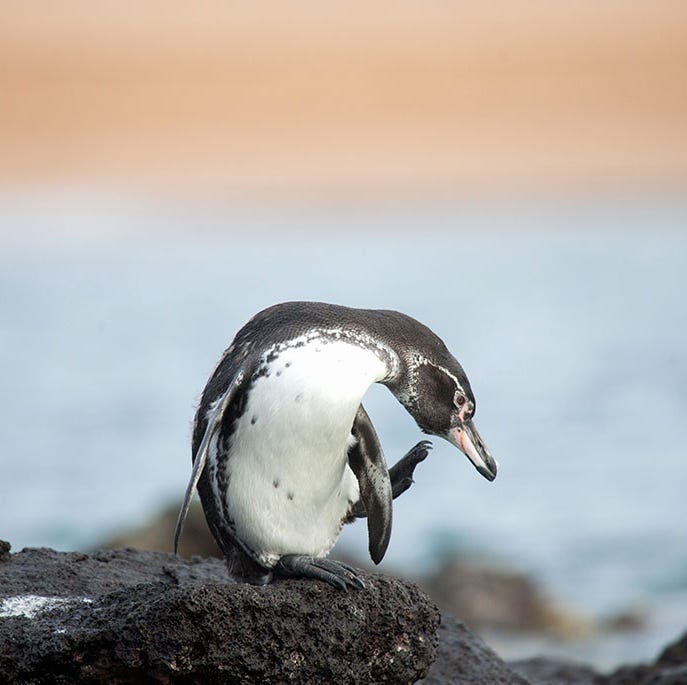 Getty Images
Getty ImagesGalápagos penguins are the only penguin species that live above the equator, but their changing environment is causing their numbers to dwindle. The population is less than 2000 as pollution and climate affect the area.
14Okapi
 Getty Images
Getty ImagesOkapi, also known as the "forest giraffe," was classified as endangered in 2013 after the discovery that their population went down 50% over an 18-year period. This is due in part to ongoing conflict in their native Democratic Republic of the Congo which has destroyed their habitat. Also, like most of the animals on this list, they are targets for poachers.
Advertisement - Continue Reading Below
15Hawksbill Turtle
 Getty Images
Getty ImagesThis species, found near tropical reefs in the Indian, Pacific, and Atlantic oceans, is dying out because their shells are sold in black markets. Sea turtles have been on the earth for 100 million years, but there are only around 15,000 Hawksbills in the world that are capable of laying eggs.
16Giant Otter
 Getty Images
Getty ImagesThe giant otters of South America have been on the endangered species list since 1999. There are less than 5,000 of these creatures left because they are hunted for their fur.
Advertisement - Continue Reading Below
17Tasmanian Devil
 Getty Images
Getty ImagesThis carnivorous marsupial native to (you guessed it) Tasmania has been largely wiped out by a facial cancer. The population was decimated from 130,000 to 150,000 in the mid-90's to between 10,000 and 15,000 in the late 1990s.
18Kakapo
 Getty Images
Getty ImagesThe kakapo or "owl parrot" is a flightless bird native to New Zealand listed as critically endangered. There are less than 150 in existence due to an incredibly slow reproductive cycle (every two or three years). Conservationists have been working to ensure the survival of the kakapo chicks to keep the species from disappearing entirely.
Advertisement - Continue Reading Below
19Honeycreeper
 Getty Images
Getty ImagesThe Hawaiian honeycreeper population is on the decline as a result of disease and habitat destruction. Research published in Science Advances in 2016 found that various honeycreeper subspecies have gone down between 68% and 94% over the last 10 years. Several organizations, including the Maui Forest BirdRecovery Project, work toward the conservation of the remaining honeycreepers.
20Amur Leopard
 Getty Images
Getty Images Native to the Russian Far East, there are less than 100 of this leopard subspecies in the wild. Fur poaching, forest degradation, and inbreeding are the primary reasons for their critically endangered status.

Adam is an NYC-based writer who has covered everything from men's fashion to video games and travel. He loves any opportunity to write about pop culture or essays inspired by his personal life.

As an Editorial Fellow for Good Housekeeping, Katie covers health, beauty, home, and pop culture. Outside of the office, you can find her killing it on the karaoke machine or listening to true crime podcasts.
Advertisement - Continue Reading Below
Advertisement - Continue Reading Below
Advertisement - Continue Reading Below





